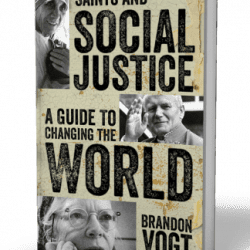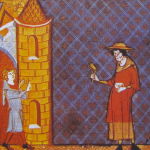Conservatives are often accused of wanting to “turn back the clock.” Yet as David Prerau notes in his book Seize the Daylight: The Curious and Contentious Story of Daylight Saving Time, when Americans actually do turn back their clocks this weekend in observance of Daylight Saving Time, they’ll have to thank not some archconservative or reactionary, but rather an early 20th century progressive reformer. 
It was just over 100 years ago, on a summer morning in 1905, that William Willett thought up the idea while riding through the English countryside. Willett thought it a pity that so many people were “wasting daylight” by sleeping in, and hit upon the idea that by having everyone set their clocks ahead one hour, he could get people to enjoy more hours of daylight after they had finished work (Willett’s plan was on this point at least less intrusive than the plan satirically proposed by Benjamin “Early to be and Early to rise” Franklin to deal with the same problem, which was to set off canons shortly after dawn).
At first Willett’s plan was greeted with mockery and derision. One member of the House of Commons sarcastically suggested that people should likewise relabel thermometers in the winter to keep it from being so cold. When Germany adopted the practice during World War I as an energy saving mechanism, however, both England and the United States felt constrained to follow suit.
 Daylight Saving Time (or, as it is derisively called, Daylight Savings Time) was hugely unpopular in the United States. Farmers didn’t like it because their crops and livestock didn’t follow it, while their customers did. Some protestant churchmen considered it a blasphemous deviation from “God’s time” (which was, in actually, set by the railroad companies in the late 19th century as a means of standardizing train schedules). The Movie industry didn’t like it because people it kept people out of the theaters. And the alleged energy savings claimed on behalf of DST were never quite able to be proved. In 1919, the Daylight Saving law was enthusiastically repealed, and DST might have died out in the U.S. altogether, were it not for what many might call Wall Street greed.
Daylight Saving Time (or, as it is derisively called, Daylight Savings Time) was hugely unpopular in the United States. Farmers didn’t like it because their crops and livestock didn’t follow it, while their customers did. Some protestant churchmen considered it a blasphemous deviation from “God’s time” (which was, in actually, set by the railroad companies in the late 19th century as a means of standardizing train schedules). The Movie industry didn’t like it because people it kept people out of the theaters. And the alleged energy savings claimed on behalf of DST were never quite able to be proved. In 1919, the Daylight Saving law was enthusiastically repealed, and DST might have died out in the U.S. altogether, were it not for what many might call Wall Street greed.
You see, London is six hours ahead of New York, which meant that the London and New York Stock Exchanges were only in simultaneous operation for one hour a day. London, however, was still observing DST, and when the London clocks moved an hour ahead each Spring, this cut off any overlap between the two exchanges. This, in turn, cut off many a financial opportunity, the nature of which is beyond me, yet nonetheless very real. For this reason, The New York Stock Exchange soon announced that it would be observing DST even if the rest of the country did not. Because of the confusion caused by having two different time settings in one city, the rest of NYC soon followed suit. And from there, DST slowly spread across the country, and more and more locales found it easier to deal with places that had already adopted DST if they adopted it themselves. Today, only mavricky Arizona does not observe Daylight Saving Time.












